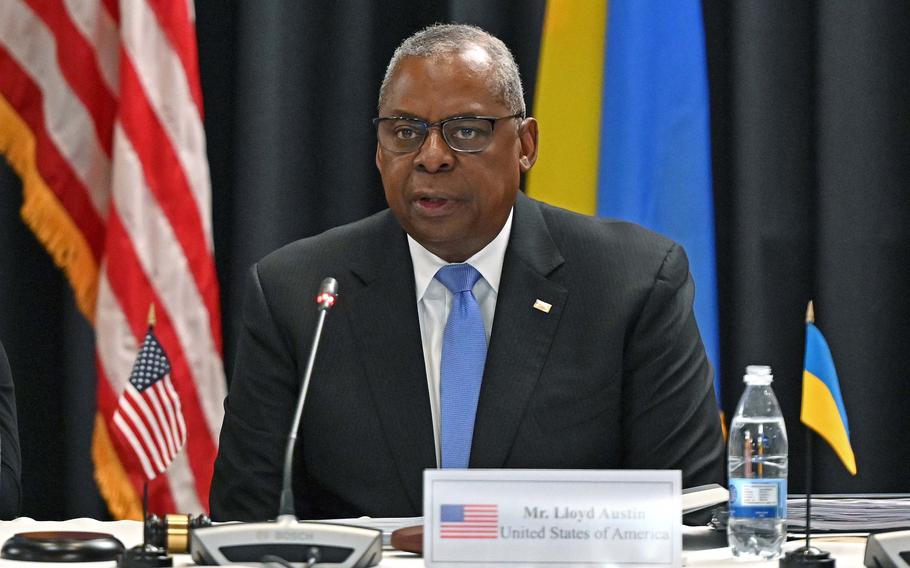
Defense Secretary Lloyd Austin recommended the U.S. government boost defense spending by about $50 billion more than projected in fiscal year 2026 with increases that would push the Pentagon budget past $1 trillion in the years to come. (Michael Abrams/Stars and Stripes)
Outgoing Defense Secretary Lloyd Austin recommended the U.S. government boost defense spending by about $50 billion more than projected in fiscal year 2026 with increases that would push the Pentagon budget past $1 trillion in the years to come.
The recommendation, made in a previously undisclosed Nov. 27 letter to the Office of Management and Budget, offers a path forward with defense-spending caps — imposed under a 2023 debt-limit deal — expiring after fiscal year 2025. The letter was seen by Bloomberg News.
The letter from the departing defense chief may give some political cover to members of Congress to increase defense spending after President-elect Donald Trump takes office on Jan. 20. Whether Trump takes up the idea is another matter, and his nominee to replace Austin, Pete Hegseth will likely be grilled on his spending views during his confirmation hearing Tuesday.
“I have not wavered in my assessment that meeting the demands of our strategy requires real growth” above inflation “and sustained new investments in fiscal years 2026-2030,” Austin wrote.
Austin recommended that OMB leave Trump’s incoming administration a proposed five-year defense plan that starts with $926.5 billion in fiscal 2026, compared with a projected $876.8 billion. Austin proposes spending of $972.8 billion in fiscal 2027 and more than $1 trillion in fiscal 2028 versus the $913.5 billion OMB projected earlier.
The Pentagon-only funding wouldn’t include assistance to Ukraine and Israel, Austin wrote in the letter. It was marked “Controlled Unclassified Information” to limit public disclosure. He said such foreign military aid should continue to be funded through supplemental appropriations.
Austin’s suggested budget targets also don’t include additional funding to replace weapons provided to Ukraine and Israel, funding that if approved would be a boost to US defense contractors.
“We know that our industrial base does not yet have the capacity to meet these needs in just one year, but investments to reset our inventories should begin no later than” the fiscal year that starts Oct. 1, he wrote.
A Pentagon spokesperson declined to comment on the memo.
“That memo accomplishes two goals,” said Mark Cancian, a former OMB official who is now an analyst with the Center for Strategic and International Studies. “First, it lays out what the Pentagon thinks it really needs. It also creates a benchmark that the Trump administration will be measured against. Of course, that’s what Austin requested” but it’s “not clear what OMB would have allowed if the process had gone forward,” he said.
Austin didn’t provide an explicit rationale for the needed boost other than to support the National Defense Strategy with its emphasis on countering China and strengthening alliances.
Austin called for defense spending of roughly 3% of U.S. GDP in fiscal years 2027-2030. OMB estimated defense spending comprises 3.2% of GDP in fiscal 2024.
Defense spending would increase beyond $1 trillion for fiscal years 2029 and 2030 versus the OMB forecasts of $932 billion and $939 billion, respectively.
Pentagon Comptroller Mike McCord said in a Bloomberg Government interview in October that the placeholder planning figure of $876 billion is “certainly a good starting point” in terms of the Biden administration’s priorities and “is naturally going to be a place to begin the discussion” as the next administration plans ahead.
©2025 Bloomberg L.P.